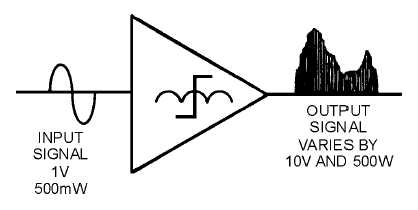3-56
Figure 3-41.—Magnetic amplifier input and output signals.
Some magnetic amplifiers are designed so a.c. goes through the load rather than pulsating d.c. This is
done by placing the load in a different circuit position with respect to the rectifier. The principle of the
magnetic amplifier remains the same: Control current still controls load current.
Magnetic amplifiers provide a way of accurately controlling large amounts of power. They are used
in servosystems (which are covered later in this training series), temperature or pressure indicators, and
power supplies.
This chapter has presented only the basic operating theory of saturable-core reactors and magnetic
amplifiers. For your convenience, simple schematic diagrams have been used to illustrate this material.
When magnetic amplifiers and saturable-core reactors are used in actual equipment, the schematics may
be more complex than those you have seen here. Also, you may find coils used in addition to those
presented in this chapter. The technical manual for the equipment in question should contain the
information you need to supplement what you have read in this chapter.
Q-46.
At what portion of the magnetization curve should a magnetic amplifier be operated?
Q-47.
How is the effect of load flux on control flux eliminated in a saturable-core reactor?
Q-48.
What is the purpose of the rectifier in a magnetic amplifier?
Q-49.
What is used to bias a magnetic amplifier so that the control winding remains free to accept
control (input) signals?
Q-50.
List two common usages of magnetic amplifiers.
SUMMARY
This chapter has presented information on differential amplifiers, operational amplifiers, and
magnetic amplifiers. The information that follows summarizes the important points of this chapter.
A DIFFERENCE AMPLIFIER is any amplifier with an output signal dependent upon the
difference between the input signals. A two-input, single-output difference amplifier can be made by
combining the common-emitter and common-base configurations in a single transistor.



